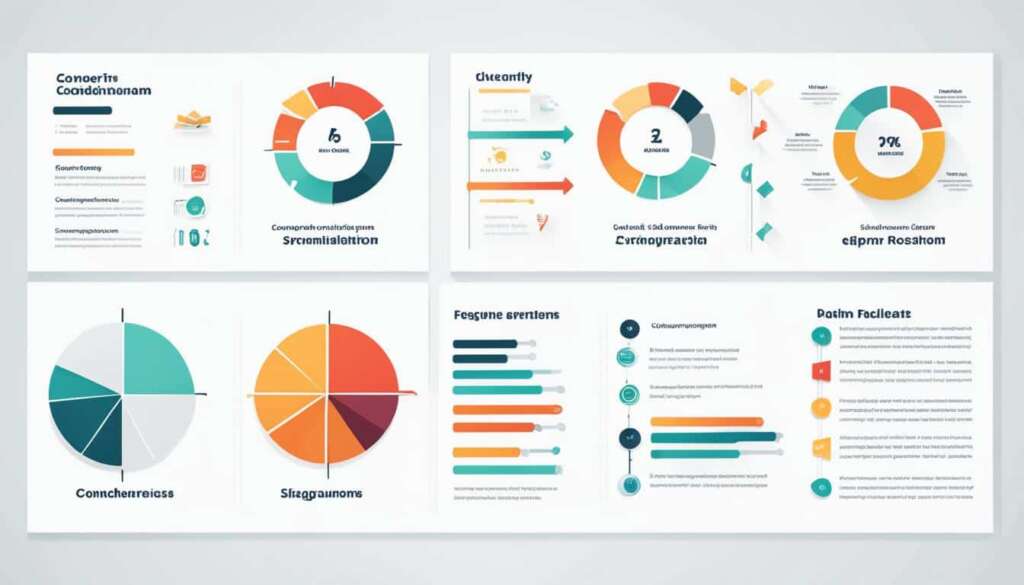Table of Contents
Are you familiar with the acronym “TLDR”? If you’ve come across it while browsing the internet or reading articles, you may be wondering what it means. In this quick guide, we’ll explain the TLDR meaning, its abbreviation, and its significance in internet slang.
TLDR is an abbreviation for “Too Long Didn’t Read.” It serves as a shorthand way to summarize lengthy content, acting as a concise summary or executive summary.
What Does TLDR Mean and How is it Used?
TLDR, an abbreviation for “Too Long Didn’t Read,” is a commonly used internet acronym with various applications. Understanding the usage and examples of TLDR is essential to navigate its usage appropriately and avoid any misunderstandings or unintended offense.
TLDR can be deployed sarcastically, serving as a brief response to an extensive article or content, indicating that the reader didn’t bother reading the entire piece. This usage displays a casual and dismissive tone, suggesting disinterest or dissatisfaction with the length of the text.
Another way TLDR is utilized is as a summary in comment sections, offering a concise overview of the content for other readers. It acts as a quick reference point, enabling individuals to grasp the main points without delving into the entire discussion.
In articles or emails, TLDR can function as an executive summary, providing essential information without requiring readers to go through the entire text. This application is particularly useful for time-conscious individuals seeking a concise understanding of the subject matter.
However, it’s important to exercise caution when using TLDR in a professional or business setting. While it may be an accepted internet slang acronym, it can be perceived as unprofessional or rude in formal contexts. Consider your audience and workplace culture before incorporating TLDR into your communication.
Remember, TLDR should be used sparingly and appropriately. It is not intended to replace thorough reading or careful consideration of content. Instead, it serves as a tool for efficiency and summarization when circumstances call for it.
Now that we understand the purpose and usage of TLDR, let’s explore some interesting examples that demonstrate its practical application.
The Usage and Variations of TLDR
TLDR, an abbreviation for “Too Long Didn’t Read,” is primarily used to summarize longer posts in internet forums and online platforms. Originally coined in 2002, TLDR has become a popular way to provide concise summaries for those who don’t have the time or interest to read the entire content.
When used as a courtesy by the original poster, TLDR serves as a condensed version of the lengthy text, allowing readers to grasp the main points without delving into the details. It can also be used as a comment, signaling that the original post is excessively long or lacking a summary.
Moreover, there are variations of TLDR that have emerged in online communities. TL;DC (Too Long; Don’t Care) and TL;DW (Too Long; Didn’t Watch) are used to express disinterest in lengthy text or video content respectively. These variations provide a concise way to relay the lack of engagement with lengthy content.
To enhance the TLDR experience, there are browser extensions available that offer TLDR summaries of online articles. These extensions allow users to quickly grasp the main points of an article without investing significant time in reading the full text.
Overall, TLDR serves as a convenient tool for summarizing lengthy content and catering to the preferences of time-constrained individuals in the digital age.
TLDR Browser Extensions
TLDR browser extensions are add-ons or plugins that provide summarized versions of online articles. These extensions help users save time and quickly understand the main points of an article without having to read it in its entirety.
| Browser Extension | Features |
|---|---|
| Simplify This | This extension offers summarized versions of articles with adjustable reading levels. |
| TLDR This | TLDR This presents concise summaries of online articles to aid in quick information consumption. |
| TLDR;DC | This browser extension provides distilled versions of news articles, allowing users to get the main information without reading the full article. |
Considerations and Etiquette When Using TLDR
When using TLDR, it’s important to consider the etiquette and format. First, it’s advisable to place the TLDR section at the end of a post or article to avoid spoiling the content for readers who prefer to read it in full. By doing so, you provide an adequate summary while still preserving the experience of exploring the entire text.
Secondly, formatting longer posts properly is crucial for making them visually appealing and easier to read. Breaking down the content into smaller paragraphs and using informative subheadings can enhance readability. Clear and concise sentences are also advisable, as they help deliver the key points effectively.
Thirdly, TLDR should be used sparingly and only when necessary. Including a TLDR section can inadvertently suggest that the post could have been shorter or lacks conciseness. Therefore, it’s essential to be strategic and use TLDR when summarizing lengthy or complex texts.
Lastly, it’s best to avoid using TLDR in formal writing. Instead, opt for more professional alternatives, such as “In summary” or “Synopsis.” These alternatives maintain a formal tone and convey the same purpose as TLDR without relying on internet slang. Following these considerations and guidelines will ensure effective communication when using TLDR in various contexts.
FAQ
What does TLDR mean?
TLDR stands for “Too Long Didn’t Read.” It is an internet acronym used to summarize lengthy content.
How is TLDR used?
TLDR can be used sarcastically as a reply to a lengthy article or content, or as a summary in comment sections and articles.
Are there variations of TLDR?
Yes, variations of TLDR include TL;DC (too long; don’t care) and TL;DW (too long; didn’t watch). These are used to indicate disinterest in lengthy text or video content.
Can TLDR be used in formal writing?
TLDR is an informal acronym and is best to avoid in formal writing. It is more professional to use alternatives such as “In summary” or “Synopsis.”
Where is TLDR commonly used?
TLDR is primarily used to summarize longer posts in internet forums, such as Reddit. It can also be used in articles or emails as an executive summary.
What should I consider when using TLDR?
When using TLDR, it’s important to place it at the end of a post to avoid spoiling the content for readers. Formatting longer posts to make them visually appealing is also recommended. TLDR should be used sparingly and only when necessary.












